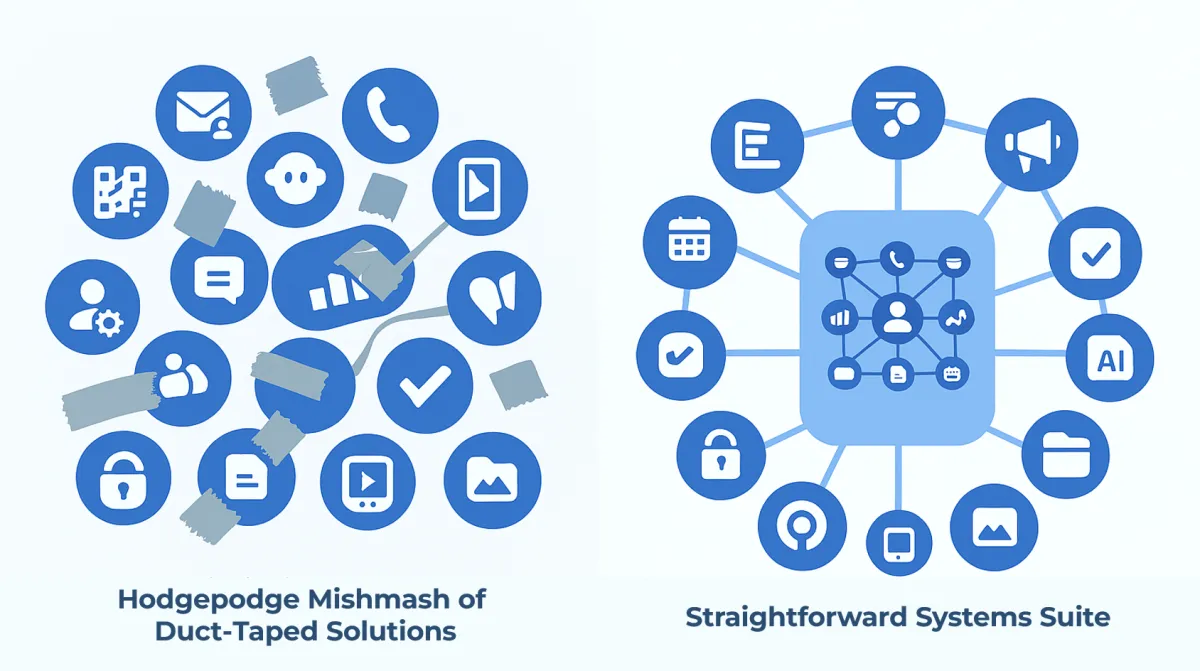Introducing the Straightforward Systems Suite
All Your Tools.
One Login.
Zero Confusion.
Your business, streamlined and stress-free...

You didn't start your business to become a part-time tech wrangler.
Multiple logins
Duct-taped integrations
Hours lost to manual work
Most 'solutions' pile on complexity...

The Straightforward Systems Suite replaces confusion with clarity.
17 integrated tools
Designed for clarity, build for growth
No more juggling subscriptions
This isn't another 'stack.'
It's a suite that works together.

Here's what's inside. Easy-to-use tools, finally unified.
| Straightforward Systems Suite | Comparable Tool | Cost |
|---|---|---|
| CRM & Contact Management | HubSpot / Zoho CRM | $20–$50 |
| Email Marketing | Mailchimp / ActiveCampaign | $13–$30 |
| SMS & Phone * | Twilio / JustCall | $20–$40 |
| Social Media Scheduling | Buffer / Social.io | $30–$50 |
| Social Media Ad Manager | Meta Ads Manager / AdEspresso | $49–$99 |
| QR Code Generator | Beaconstac / QR Code Monkey | $5–$15 |
| Funnel & Website Builder | ClickFunnels / Wix | $30–$97 |
| Calendar & Booking | Calendly Pro | $12–$15 |
| Reputation Management | Birdeye / Podium | $99–$300 |
| Automation & Workflows | Zapier / Make | $19–$49 |
| E-Signature & Documents | DocuSign / PandaDoc | $10–$40 |
| Invoicing & Payments | FreshBooks / HoneyBook | $16–$39 |
| Memberships & Courses | Kajabi / Teachable | $59–$149 |
| Blogging & SEO | WordPress + Yoast | $10–$30 |
| Private Media Storage | Vimeo Pro / Dropbox Business | $20–$50 |
| Analytics & Reporting | AgencyAnalytics / Databox | $49–$99 |
| AI Content & Chatbot ** | Jasper / ManyChat | $39–$99 |
| Estimated total (monthly) | $500–$1,252 |
* May require usage-based fees for messaging/calls. ** AI features vary by plan and usage.
...and more. All included. All integrated.
Individually, thee tools cost $500-$1,200/month
The Straightforward Systems Suite
$250/month. Zero setup fees.
FREE domain name
FREE onboarding & training
40% off for additional businesses

Because you want results,
not roadblocks.
Clarity
Engagement
Flexibility
Stop duct-taping. Start scaling.

© StraightForward Consulting 2025
All Rights Reserved
